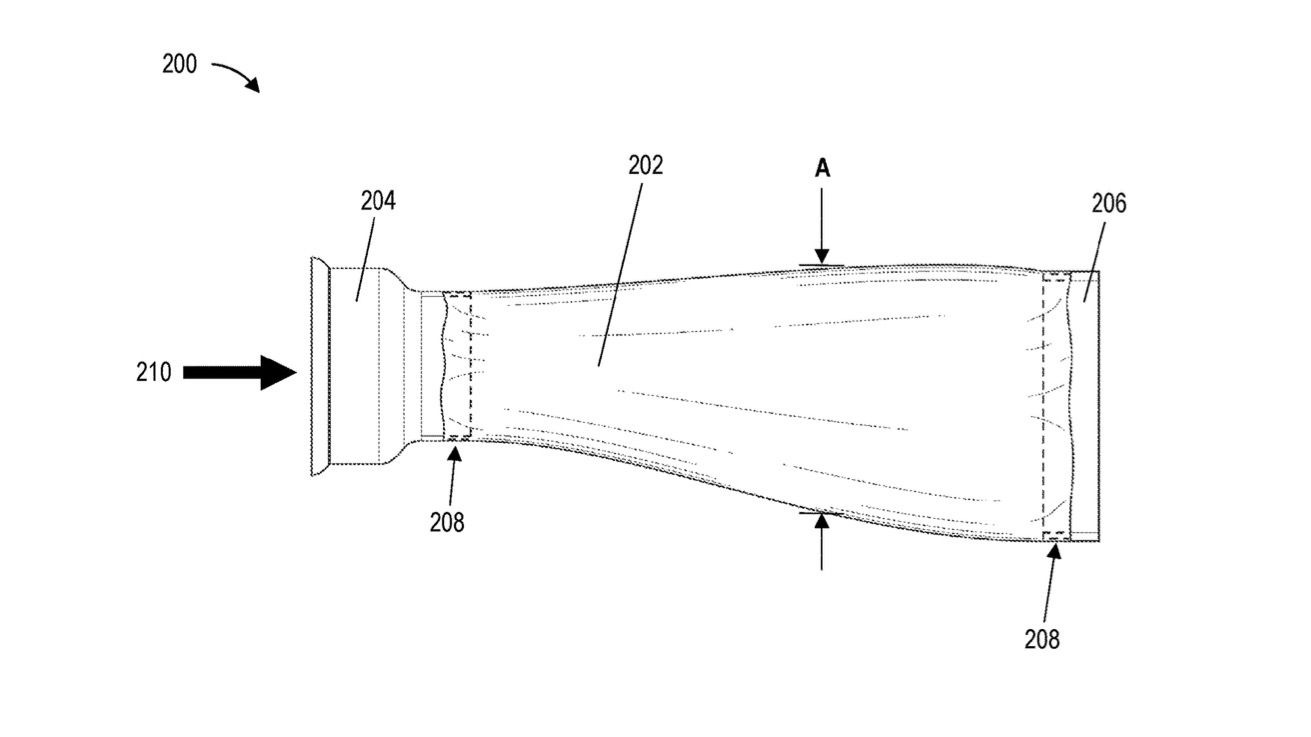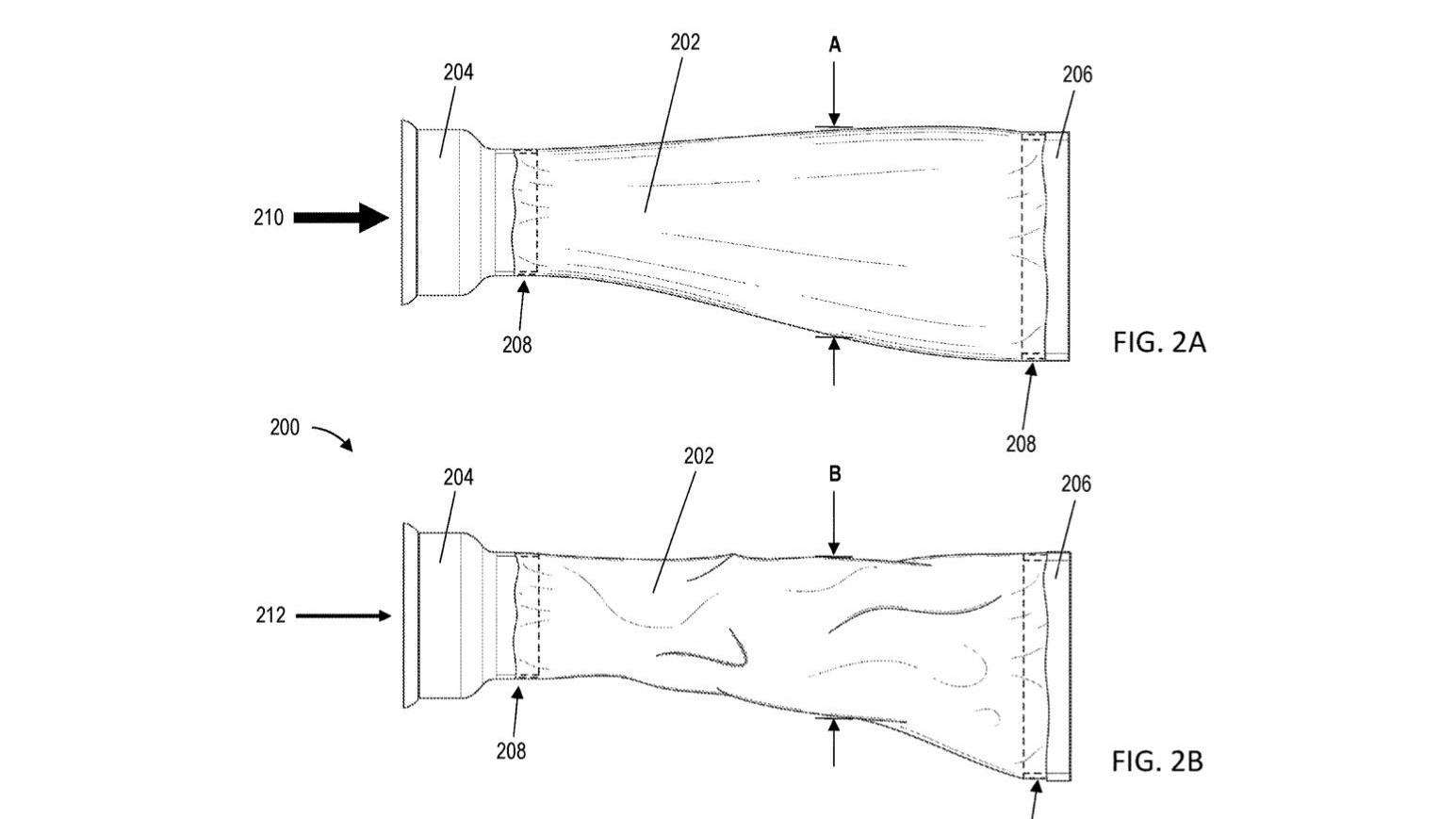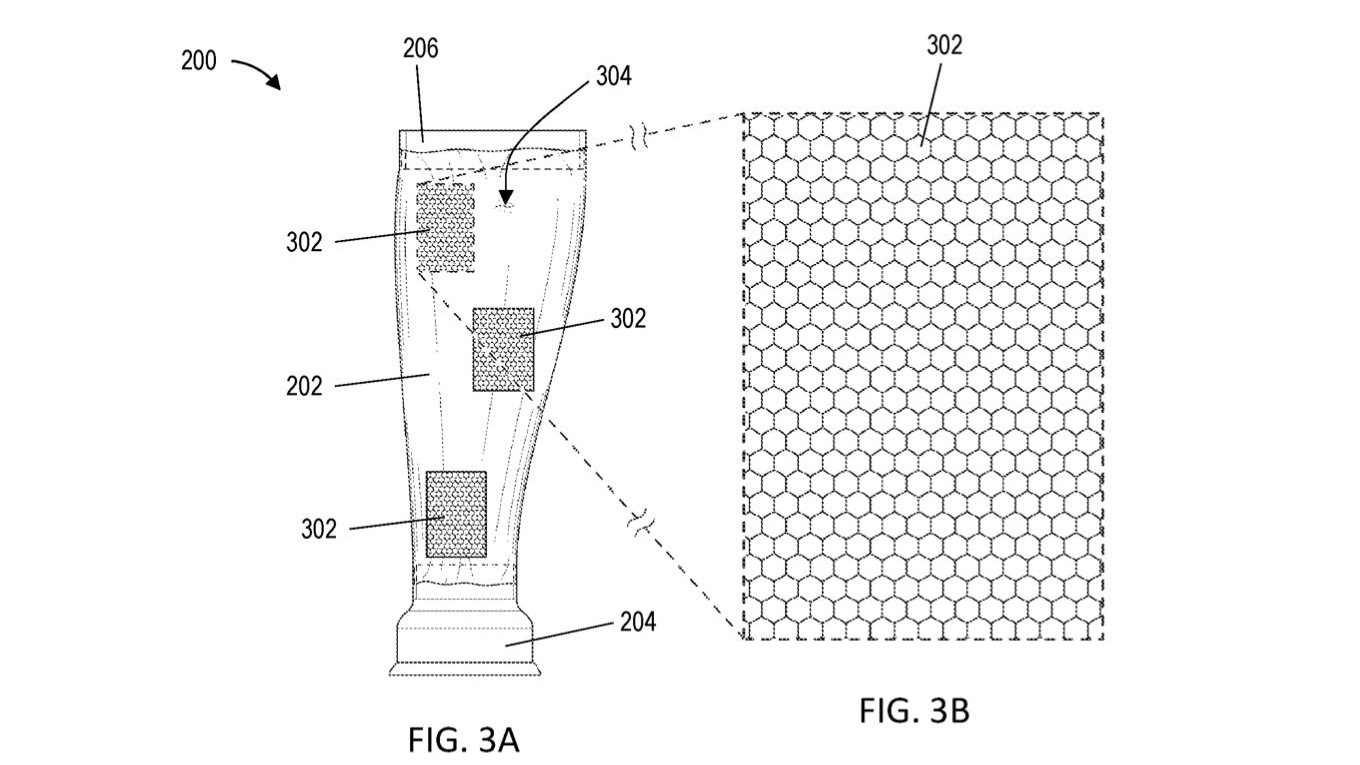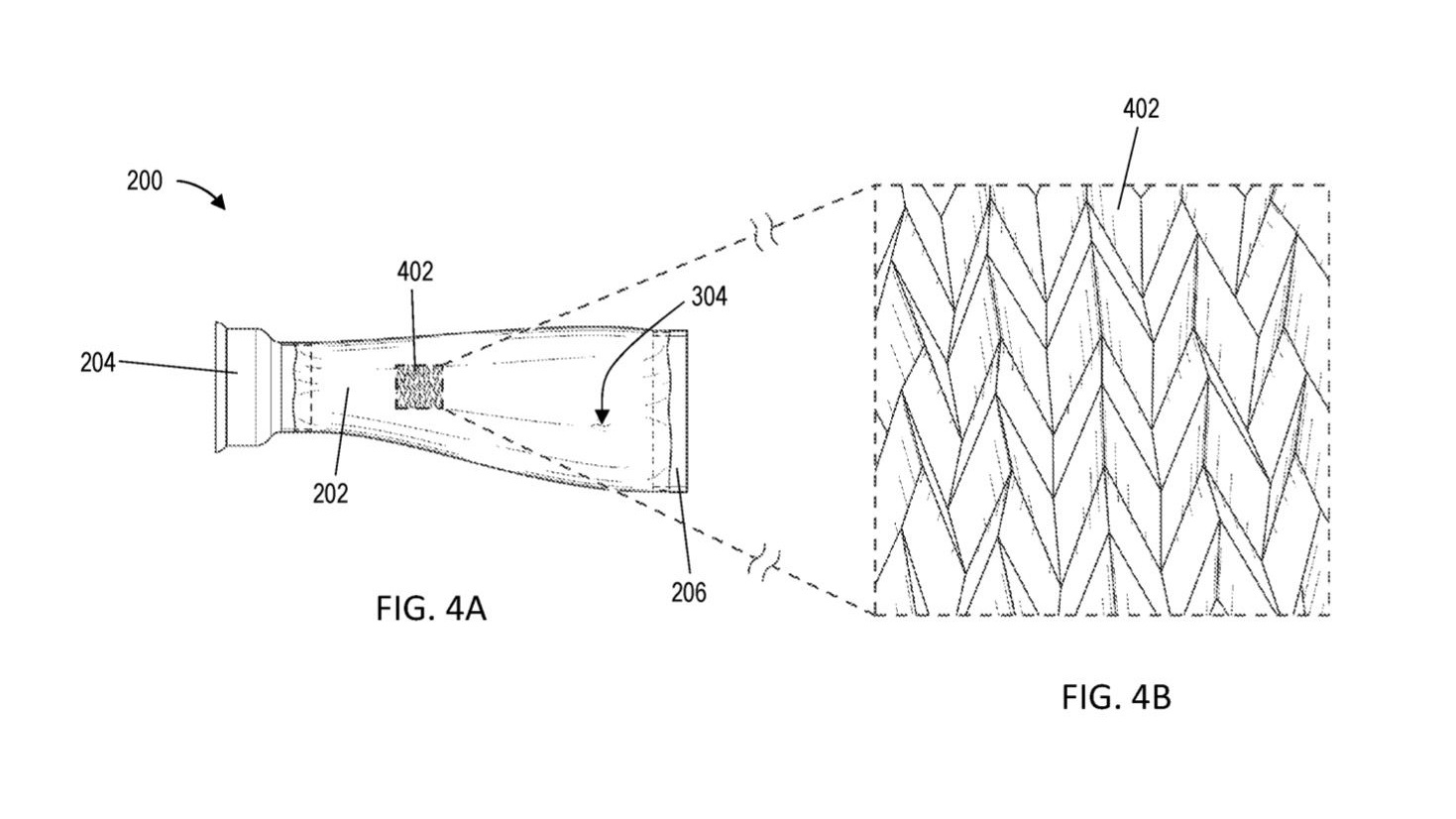- GM filed a patent for adaptive air intakes with the United States Patent and Trademark Office (USPTO)
- The inlet and outlet would be fixed with an movable element in the middle
- The concept could reduce costs and complexity of building various vehicles
General Motors is developing an adaptive air intake duct that could expand and contract based on airflow, which the automaker claims will allow for increased parts commonality across vehicles.
The adaptive intake was the subject of a patent application filed by GM in 2022, but which only surfaced when it was published by the United States Patent and Trademark Office (USPTO) June 27, 2024.
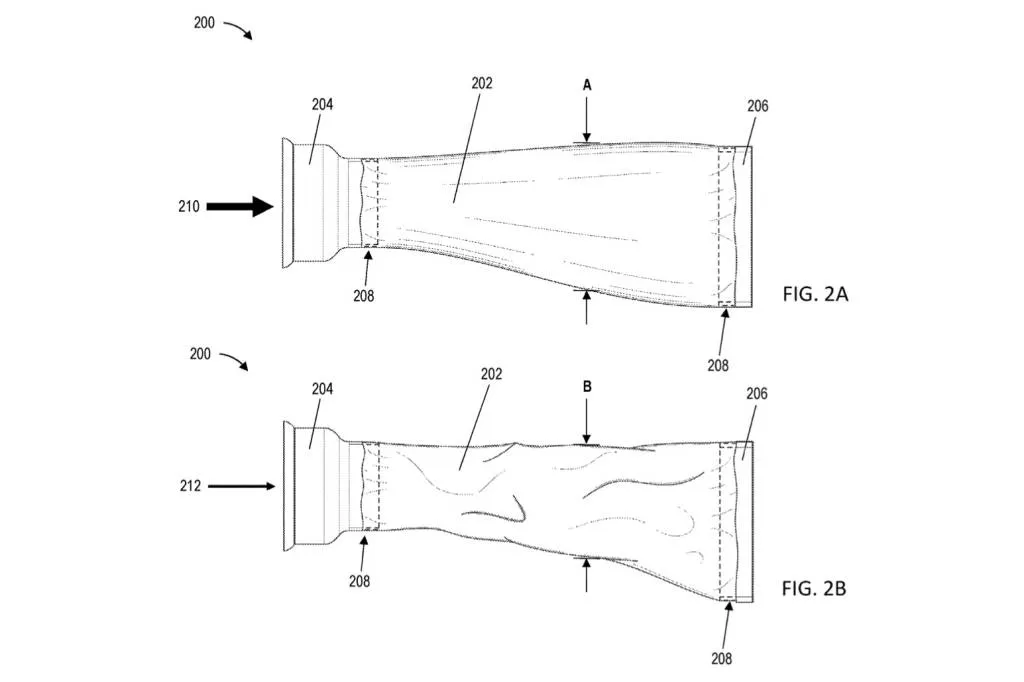
General Motors adaptive air intake patent image
In the application, GM discusses an air intake setup consisting of fixed inlet and outlet portions, with a movable element in the middle. That middle part would be "made of a flexible material having a cross-sectional area that expands and contracts responsive to the incoming air flow volume," GM said in the application.
Potential materials that could achieve the required level of flexibility include various polyethylene blends, as well as "waterproof felt, silicone fabric, and platinum-catalyzed silicon," according to GM.
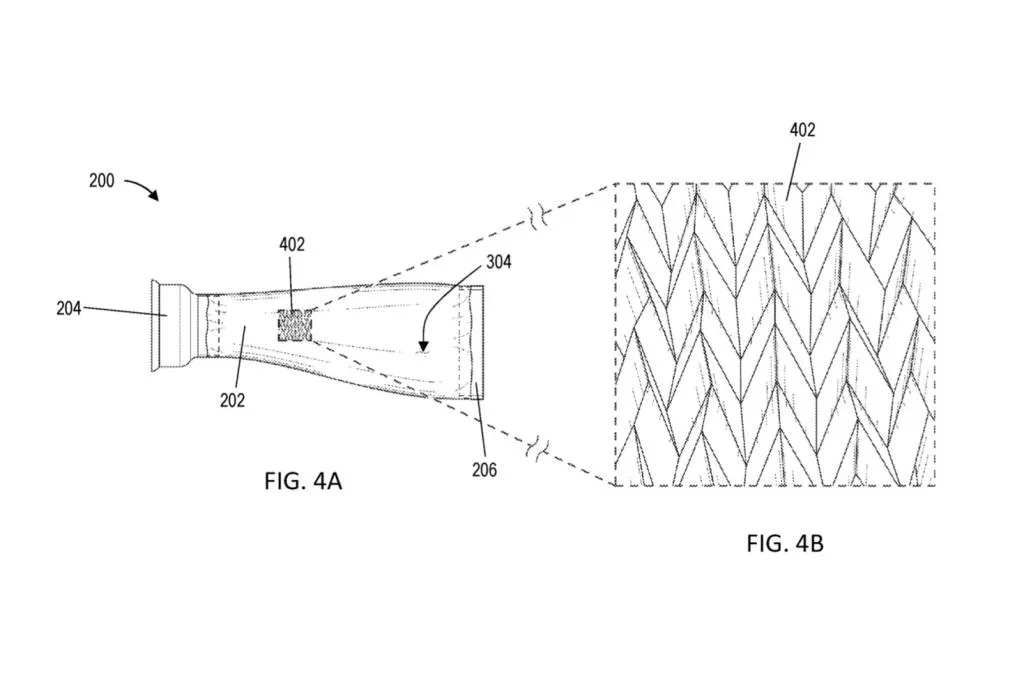
General Motors adaptive air intake patent image
If the interior of an air intake can expand or contract for different rates of air flow, the packaging doesn't need to change for different applications, GM notes. That reduces the need for different air intake designs for different vehicles, along with associated manufacturing costs related to specific tooling for those design variations. An adaptive air intake would be more space efficient as well, GM claims, making it easier to package in a vehicle as well as easier to ship to factories.
The cost-cutting powers of parts commonality are hard to underestimate. It's why automakers seek to use big-ticket items like engines and infotainment systems across as many models as possible. And that will likely be the motivation should this adaptive air intake make it to production.
